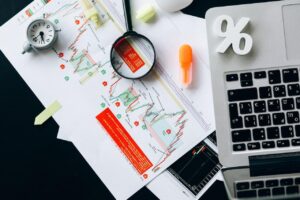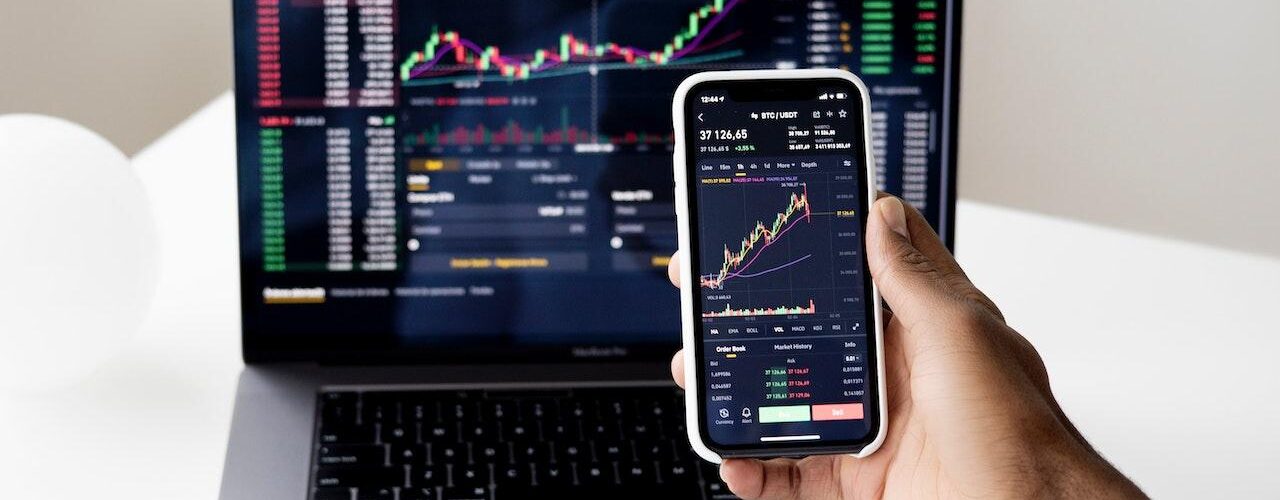It used to be that the only people who could “play the stock market” were specialists employed by financial firms or professional speculators with the might of a giant hedge fund supporting them. Online trading platforms have opened the door for almost anyone to become a day trader. The potential rewards are massive, but so are the risks involved, as you are about to find out.
What is day trading, you ask? It is a form of speculation where the trader buys and sells a financial instrument, such as stocks and shares, currency, or cryptocurrency, within the same trading day. All positions are closed before the markets close, a stark difference from traditional buy-and-hold or value investing. Traders hope to profit from the rapid fluctuations in an instrument’s prices.
Day trading is common on stock markets such as the London Stock Exchange, the American NASDAQ, or foreign exchange; the latter is known as forex. Despite what Hollywood movies tell us, you do not need to be a mathematical genius to become a day trader. Indeed, there is no mathematics involved, so do not worry if you need an online betting odds calculator to work out your winnings or someone who struggles with the most basic math problems because day traders use other strategies to make money.
How Does a Day Trader Make Money?

Although you are not required to have a mathematical background to become a successful day trader, you must have an analytical mind, remain disciplined, and have an eye for spotting patterns and trends in data and graphs. Every successful day trader specializes in their chosen market, whether a particular currency pairing, industry, or a commodity like gold or oil.
A traditional buy-and-hold investor will go through a company’s financial records and fundamentals with a fine-toothed comb, hoping to make a sound investment. Day traders do not care much for such information. Instead, they are concerned with events that cause short-term market moves. Think along the lines of interest rate change announcements, corporate earnings, and economic statistics, and you are somewhere close.
Anything that can cause a financial instrument’s price to increase or decrease is news to a day trader’s ears. After all, those price movements are how they make money. Day traders buy at a low price before selling when that price rises. Conversely, they can short a stock or currency if they predict the price will fall.
The price movement does not have to be significant for a trader to seize the opportunity to make money. Scalpers are traders who try to make many small profits on small price changes throughout the day. For example, they may buy stock in Company X for $100 and sell it as soon as it reaches $100.50. They then make numerous more trades throughout the day as the price fluctuates. Make enough correct predictions while the market is open, and there is potential to make a lot of money.
What Tools Does a Day Trader Use?
There is little in the way of equipment required to become a day trader, although there are a few prerequisites. Although it is possible to trade from a mobile phone or tablet, most day traders have a fast, powerful computer with multiple monitors displaying all kinds of information.
It is essential to have a fast and stable internet connection. Slow internet or internet connections suffering from high pings and lag can result in missing the perfect entry or exit point. Furthermore, if your internet drops out, you could be left unable to close a position and take a profit or, worse still, close a losing trade.
Traders often have several financial news websites open on one of their monitors to keep abreast of the latest news that could cause shifts in the market. In addition, they use charting software that allows them to look for patterns in data, such as trading volumes, price fluctuations, etc.
Patterns found in graphs can indicate how an asset’s price will move. Patterns such as ascending and descending triangles, pennants, flags, and double bottoms probably mean nothing to you now, but day traders can spot them and use them as part of their analysis.
Equipment and software aside, a bankroll is one of the most critical tools a day trader possesses. A bankroll is a pool of money set aside purely for day trading. Without the money to buy or short assets, a day trader cannot work; a bankroll is their lifeblood. Many day traders do not risk more than 1% of their bankroll at any time, leading to the need for a substantial bankroll, often over $100,000, to make any significant money.
What Are The Risks of Day Trading?
Everything you have read about day trading so far probably makes it sound like an effortless way to make a lot of money. It sounds like you make a few observations, buy an asset, wait for it to move, then sell it for a profit. Unfortunately, it is not as simple as that, and day trading is extremely risky.
Studies show that only 3% of day traders make consistent profits. That means 97% of people who trade in this manner fail. No perfect formula guarantees success, as those scary figures show. You could spend dozens of hours researching the ideal entry point for a buy order only for the price to move in the opposite direction. You are on the hook for the financial loss when this happens.
Indeed, one losing trade can often be enough to wipe out your day’s, week’s, or month’s profits. Losses can be astronomical, too. Many day traders use something called leverage to potentially increase their profits. Leverage is borrowed money that allows trades to gain exposure to larger trading positions. Some countries have laws that limit the leverage ratio, but it can be upwards of 30:1, meaning if you lose $100 of your money, you actually lose $3,000. Imagine having a $10,000 losing trade at 30:1 leverage; you would owe the trading platform a staggering $300,000.
Please do not jump into the world of day trading without spending weeks or months researching everything and anything you can about it. Once you have done that, spend a few more months devising a strategy, then a few more months trading on a demo account for virtual money to test those strategies. Then and only then should you consider putting your money on the line.
For more valuable information visit our website.










